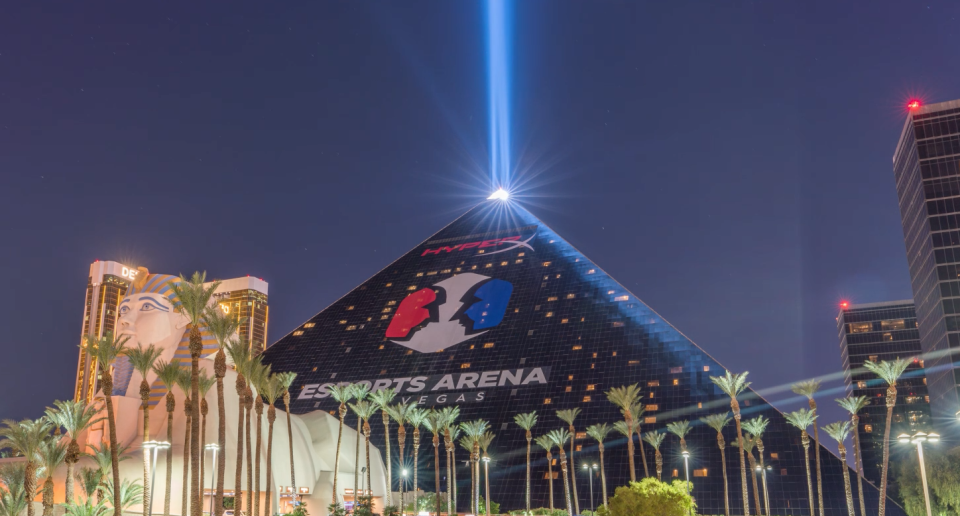Esports will be 'bigger than music and movies combined,' says Allied Esports CEO
This is the year when the global market for esports—competitive video gaming—will top $1 billion in revenues for the first time, according to Newzoo, one of the few research firms that closely tracks such data. Newzoo projects 2019 esports revenue to hit $1.1 billion, up 26.7% from 2018, driven by big brands buying sponsorships and media rights.
That’s still a tiny slice of the overall video game market—Newzoo pegs that at $152 billion in revenue for 2019, up 9.6% from 2018.
But as you can see from those numbers, the growth rate for esports is triple the rate of the overall video game industry.
“There are 2.3 billion gamers around the world, and as an industry, video gaming is already bigger than music and movies combined,” says Frank Ng, CEO of Allied Esports. “We project that esports will be the biggest format of entertainment. Every publisher in the world is getting into this.”
Allied Esports (AESE) is among a few small early esports IPOs—it debuted on the Nasdaq in August. The company owns venues that host esports tournaments, including the HyperX Esports Arena in the Luxor Hotel in Las Vegas and two HyperX Esports Trucks in North America and Europe. This week, Allied Esports partnered with Fortress Esports to open Fortress Melbourne in Australia, which will be the largest esports venue in the Southern hemisphere.
Another esports IPO this year was Super League Gaming (SLGG), which puts on amateur esports tournaments.
Neither listing has done well so far; Allied Esports is down more than 20% since its debut, while Super League Gaming is down more than 50% since its debut.

Of course, Ng has to be bullish on his own industry. And his peers in the industry all sound the same—they insist esports will only continue to balloon.
But many onlookers see a bubble, one that has already been overstated.
Talk of an esports bubble
Esports teams pay millions to leagues (run by major corporations like Activision Blizzard) to participate, brands pay millions to leagues to sponsor, but most teams, and most smaller esports companies, are not making a profit. Frank Fields, sponsorship manager for gaming hardware maker Corsair, told video game site Kotaku, “There’s a lot of money going in, and not a lot of money going out.”
Kotaku, in its extensive story in May about the possible esports bubble, reported that 17 esports industry professionals told the site they have concerns of a bubble, with some calling the industry “completely unsustainable.” Some have compared esports to the ‘90s dot-com bubble.
Corsair’s Fields even reportedly said on stage at a gaming conference, “I feel like esports is almost running a Ponzi scheme at this point.”
Nevertheless, big consumer brands from Coca-Cola to Red Bull to Anheuser-Busch InBev to Intel have spent big on esports sponsorships. Daniel Cherry, CMO of Activision Blizzard Esports Leagues, says sponsors are drawn in because the audience is young and global. He says 18- to 34-year-olds make up 90% of the audience for Activision Blizzard’s (ATVI) esports leagues, and that segment has grown 50% year over year.
Frank Ng says it’s not a bubble.
“I don’t think it is a bubble if there are real participants coming into this playing it every day,” he says. “We should focus on the audience. The young kids, they are watching it. Hundreds of millions of people are watching every day—maybe not a formal tournament, but maybe a streamer playing competitively... This is the very early stage of a gigantic industry. We know the industry will be huge down the road. It’s not a bubble.”
—
Daniel Roberts is the sports business writer at Yahoo Finance. Follow him on Twitter at @readDanwrite.
Read more:
Super League Gaming CEO: Today's gamer is 'not who we think'
ESPN president says esports is not a fad
Nielsen will track esports sponsor exposure data for Activision

 Yahoo Finance
Yahoo Finance 

